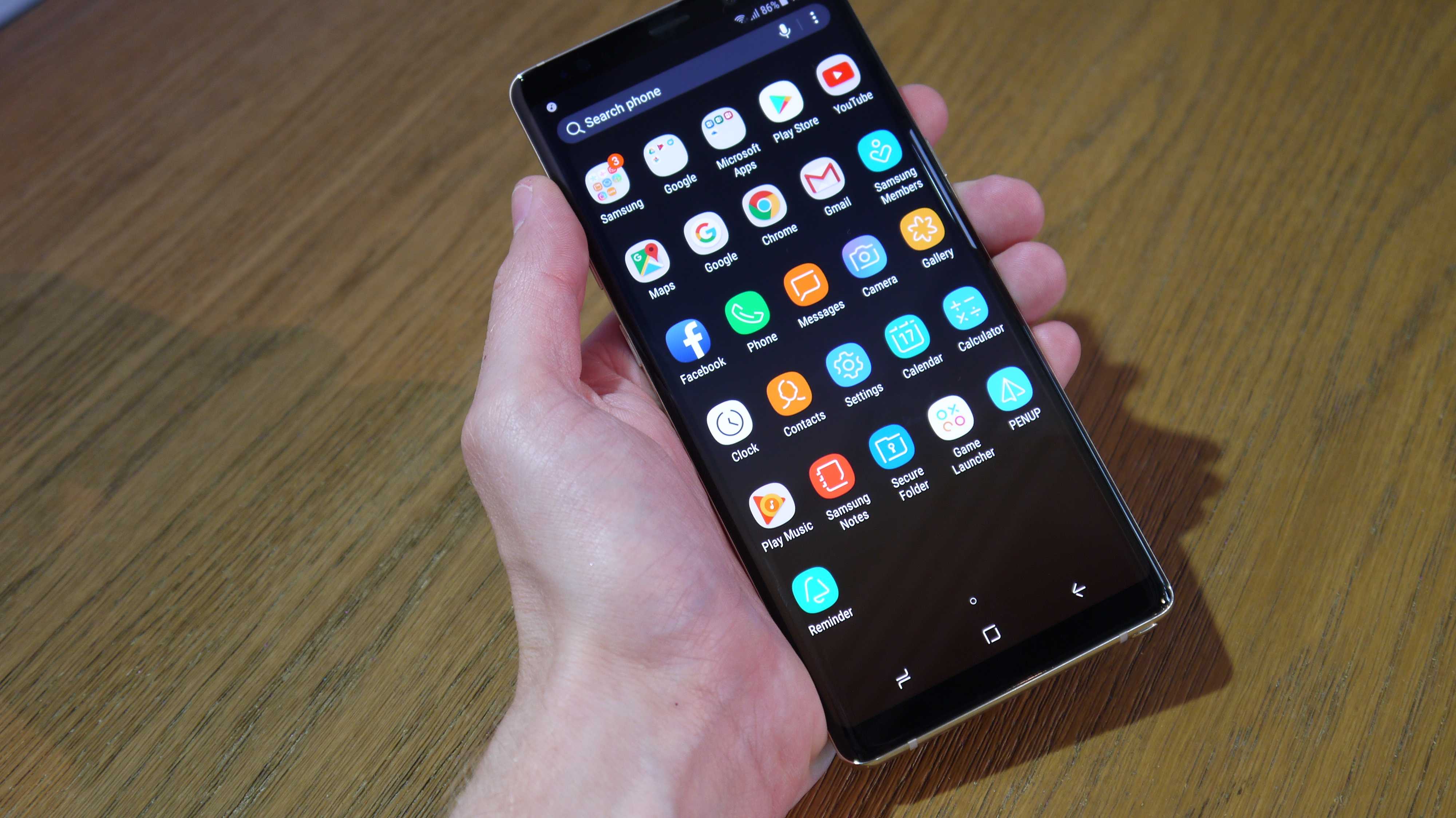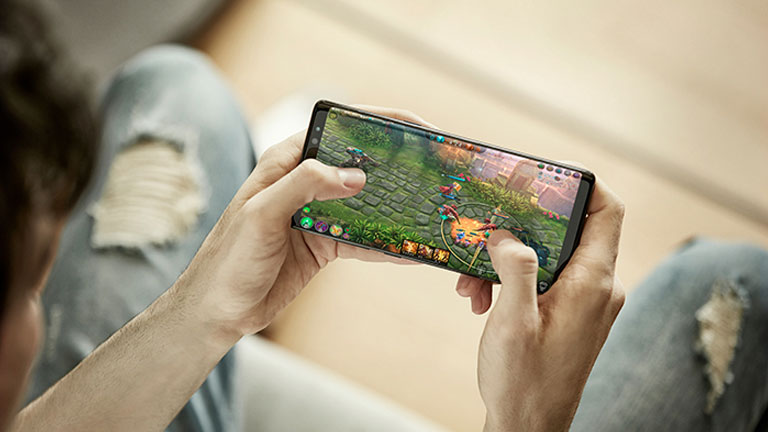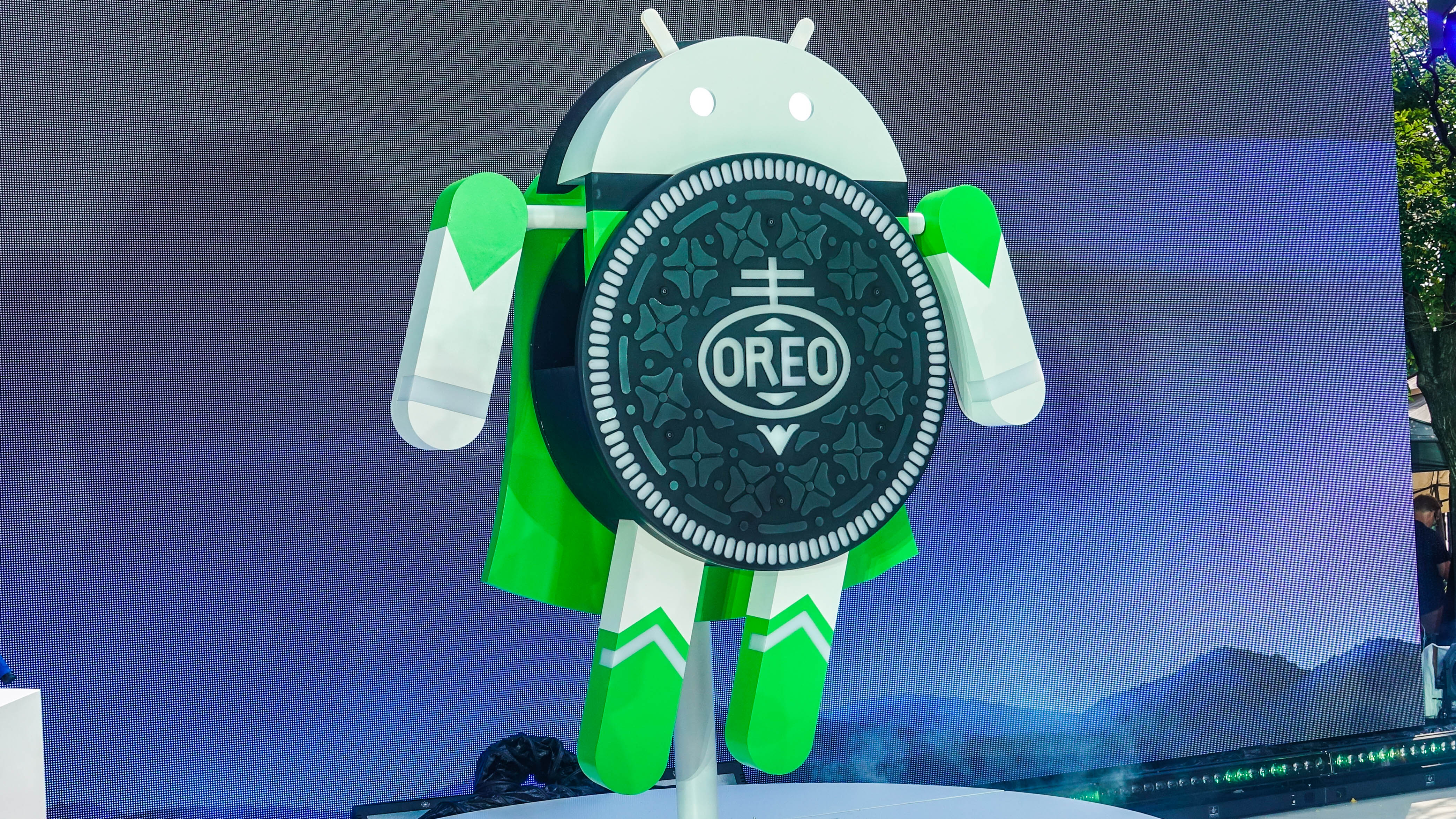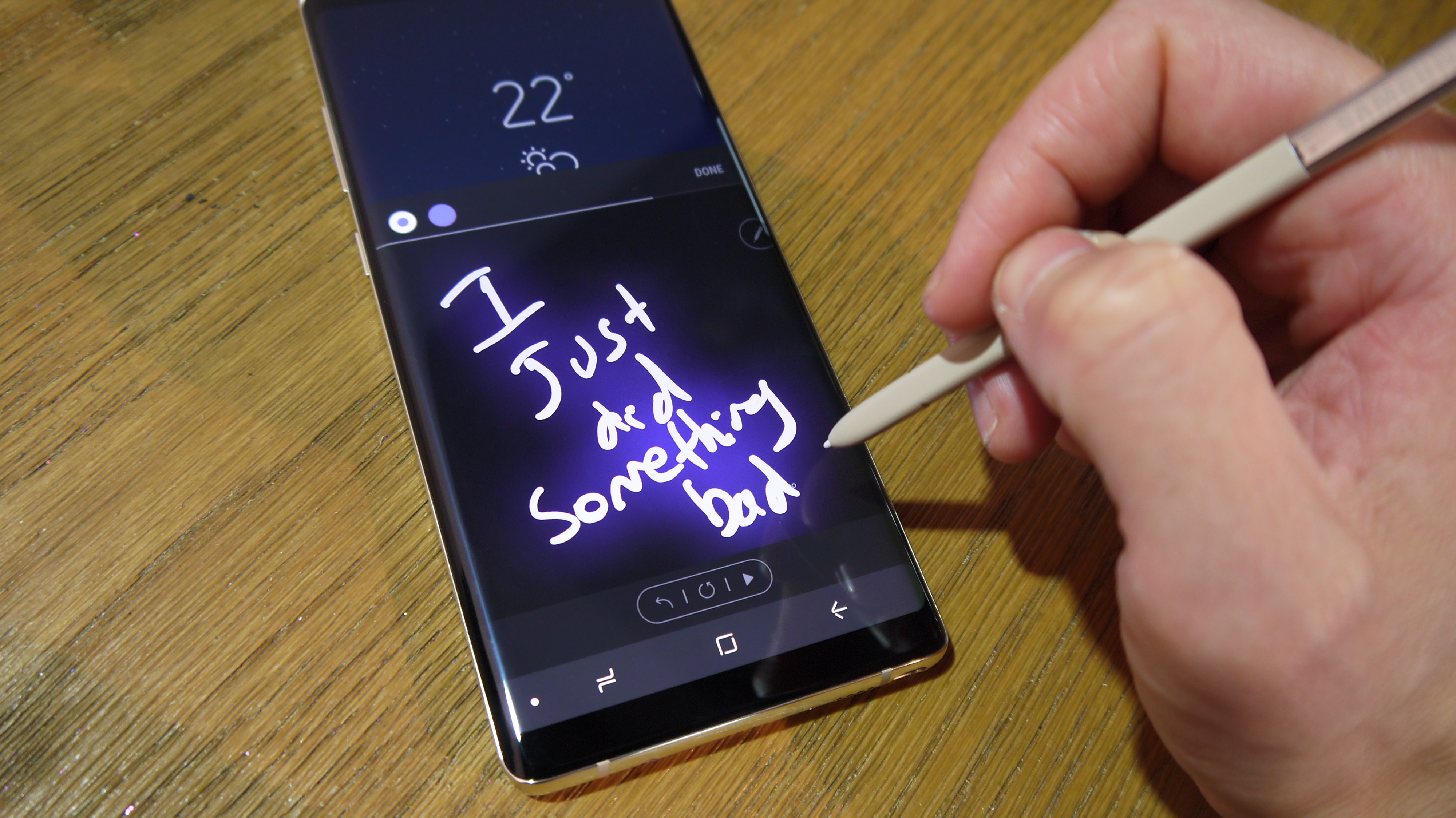Google Pixel 2 XL vs Samsung Galaxy Note 8
This competition may be too close

The Galaxy Note 8 is Samsung’s latest, greatest, and biggest smartphone. But, with the Google Pixel 2 XL finally arriving, it has to go head-to-head with the maker of Android’s best Android smartphone.
Samsung may consistently sit at the top of the pack, but last year Google came out strong with the first Pixel phones. And if the Pixel 2 XL is a worth successor to the original, it could challenge the Note 8 on many levels.
- Check out our early look at the new Google Pixel 2 XL in our first hands on
Let’s take a close look at what each of the phones offer and see which is standing strongest so far.
Design

This year, the Galaxy Note 8 got the best of everything, as Samsung carried the elegant curved glass display from its Galaxy S8 series over to the Note line. The result is a huge glass display with almost no bezel in sight. The Note 8 features curved glass on the back as well, and frames all of this with a metal edge wrapping around the phone.
Even though the Galaxy Note 8 packs a 6.3-inch display, it manages not to feel excessively large because it still only measures 162.5 x 74.8 x 8.6mm thanks to the trimmed bezels. It doesn’t even end up very heavy, weighing just 195g.

The Pixel 2 XL doesn’t have the same design spice as the Galaxy Note 8. It has slim bezels, but not the same nearly non-existent bezels as the Note 8. It maintains the quirky back design of last year’s Pixel phones with a metal lower section and glass upper section. There’s nothing wrong with the design, but it still feels a bit last-year compared to the sleek Note 8.
Both phones feature fingerprint scanners on the back. Samsung positions its scanner next to the dual-lens camera and heart rate sensor, which can be an unfortunately awkward spot to reach. In contrast, the Pixel 2 XL has its fingerprint scanner closer to the middle of the phone’s rear, so it will likely be easier for users to find without flipping their phone over or smudging their camera lens. And, Google boasts that it's the fastest smartphone fingerprint scanner.
Sign up for breaking news, reviews, opinion, top tech deals, and more.
The Note 8 and Pixel 2 XL offer similar levels of protection with Gorilla Glass 5, which should prevent a shattered screen on both phones from drops of 5 feet onto a flat surface. The Pixel XL 2 has an IP67 rating against water and dust ingress, so it can handle a dunk in three feet of water for 30 minutes. The Note 8 gains an edge here, as it has an IP68 rating, letting it go about a foot deeper for the same 30 minutes underwater.
For audio, the Galaxy Note 8 keeps the old-school tried-and-true 3.5mm jack for wired headphones. It has a bottom-firing speaker, but it’s nothing to get excited about. The Pixel 2 XL doesn’t have the 3.5mm jack, but a dongle can fix that. What it does have is a pair of front-facing speakers at the top and bottom of the screen for serious stereo sound. On top of that, the Pixel 2 XL will have advanced wireless codecs for improved audio with wireless headphones thanks to Android 8.0 Oreo.
The two phones are on even footing for color options, so the winner will come down to simple preference and where you live. The Galaxy Note 8 is available in Orchid Grey and Midnight Black in the US, though more colors are available for the international version. The Pixel 2 XL has “Just Black” and “Black & White” as color options.
Display

The display competition is a close one. The Galaxy Note 8 loads a 6.3-inch ultra-widescreen Super AMOLED display that takes up the vast majority of the phone’s front. It sports a resolution of 2,960 x 1,440 for a super crisp pixel density of 521 pixels per inch.
The Pixel 2 XL has a slightly smaller 6-inch pOLED display with a resolution of 2,880 x 1,440. This results in a great pixel density, but at these screen sizes, you’ll be hard-pressed to notice the difference in density between the two phones, even in virtual reality.
While the Note 8 has a phenomenal display and the Pixel 2 XL will likely earn that same distinction in our reviews, the winner is likely to be the Note 8. It’s hard to beat Samsung when it comes to top-of-the-line displays.
Both phones will have great pictures, and thanks to OLED technology they’ll offer brilliant contrast ratios for video playback. But, Samsung’s display is likely to be the more dazzling option, especially thanks to the curved glass edges.
It’s also worth factoring in that the Galaxy Note 8 has the S Pen stylus, which opens the door for unique features and easy note-taking.
OS and power

The Galaxy Note 8 is powered by the same chipset as the Galaxy S8, an octa-core Snapdragon 835 in the US and a octa-core Exynos 8895 for the international version. But it steps up its performance with 6GB of RAM.
The Pixel 2 XL stands on an even footing with the Note 8 for processing power, as it also has a Snapdragon 835 chipset. However, it only comes with 4GB of RAM. Though, average mobile users may struggle to notice a serious difference between the Pixel 2 XL’s 4GB of RAM and the Note 8’s 6GB.
Both the Pixel 2 XL and Galaxy Note 8 base models start with 64GB of internal storage. But the Note 8 offers extra-affordable storage with its microSD card slot.
For at least a little while, the Pixel 2 XL is going to gain an advantage over the Note 8 in terms of operating systems. The Note 8 is currently running Android 7.1.1 Nougat, while the Pixel 2 XL starts straightaway on Android 8.0 Oreo.
On top of Android Oreo being more optimized than Nougat, it’s a safe bet that Google has done a great job optimizing Android Oreo performance on the Pixel 2 XL. So, it should run incredibly smooth, and beat the Note 8 on boot times. Google Assistant is also expected to play a large role in using the Pixel 2 XL, and Google has made it easy to access with the Active Edge technology. A simple squeeze of the phone will active Google Assistant.
Camera and Battery

After the fiasco of the incendiary Galaxy Note 7 batteries, Samsung hasn’t gone wild with the Note 8. It as a 3,300mAh battery that should usually last for a day of use. The battery is capable of fast charging and can even be charged wirelessly.
The Pixel XL 2 is likely going to win in the battery contest once we’ve tested it out. It comes with a 3,520mAh battery, topping the Note 8 by a decent margin. Factor in that the Pixel XL 2 has the same processor and a smaller display with fewer pixels to power, and Google’s phone will probably last longer between recharges than the Note 8.
The camera is another contest that will be hard to call before we have a chance to test the new Pixel 2 XL camera.
Samsung is always bringing best-in-class smartphone cameras, and the Galaxy Note 8 is no exception. It has a dual-lens setup with a 12MP f/1.7 wide-angle lens and a 12MP f/2.4 telephoto lens. Both camera sensors include optical image stabilization, so the shooting experience is great on both. Samsung has added some special features for the dual cameras, including the ability to adjust depth of field before and after taking a picture and an option to take a close-up photo and a wide-angle photo at the same time.

Though the Pixel 2 XL only has a single 12MP rear camera, it could still dazzle us. Last year’s Pixel came with the highest DxOMark score for a smartphone camera at the time, and the new camera sets the bar for smartphone cameras even higher. While it only has the one rear camera, it includes optical and electronic image stabilization, and thanks to dual pixel technology and Google's AI, it can create a portrait effect like dual-lens cameras do.
For selfie-lover, the Galaxy Note 8 has a sharp 8MP front-facing camera, and the Pixel 2 XL keeps up with its own 8MP selfie shooter that features the same portrait mode as the rear camera.
It’s worth noting that both phones have special image recognition software. Google Lens will help the Pixel 2 XL identify camera subjects and can pull in Google Assistant to get more information about the photo, add it to a calendar, or more. It can even translate text. The Note 8 comes with Samsung’s Bixby personal assistant that can recognize imagery, but it’s not yet quite as smart as Google’s AI.
Price

Size comes at a price, and so does design. The Galaxy Note 8 starts at a painful US$929/AU$1499, making it one of the most expensive smartphones coming from a non-niche manufacturer. The Pixel 2 XL doesn’t come all that much cheaper, with a starting price of US$849/AU$1,399 (for a limited time, that includes a free Google Home Mini, at least in the US).
The price difference between the Galaxy S8 and Pixel 2 was a bit more of an even match because discounts and buy-one-get-one deals frequently make the Galaxy S8 more affordable than its list price suggests. However, both the Note 8 and Pixel 2 XL are still firmly on this side of new, and tangible discounts will be hard to find.
It’s hard to say one phone of these two wins in the price war though, as that $80 extra for the Note 8 comes with an S Pen, curved glass display, headphone jack, 2GB of extra RAM, better water-resistance, a second camera, a heart rate sensor and an even bigger and high-resolution display.
So, while the Pixel 2 XL costs US$80 less, it also costs the loss of a lot of extra goodies.
Takeaway
The competition between the Note 8 and Pixel 2 XL is a little tougher to call than the one between the Galaxy S8 and Pixel 2.
In terms of the hardware and software working together, it seems like the Pixel 2 XL might gain the advantage thanks to Google Assistant and Android 8.0 Oreo. But, the Note 8's extra 2GB of RAM and S Pen capabilities could even the score.
Until we test the cameras, it's also tough to say which phone has the better camera. DxOMark clearly puts the Google Pixel 2 XL at the top of the pack, but the Galaxy Note 8 camera offers incredibly photography.
Both phones also offer displays that should be so sharp it's hard to spot a difference. The difference between an AMOLED display in the Note 8 and pOLED display in the Pixel 2 XL will be interesting to see, but it's too early to say if one beats the other.
The Pixel 2 XL does look a little more modern than its smaller sibling, but the Note 8 has a more striking design thanks to the curved display, so we still give it the lead aesthetic.
Until we can review the Pixel 2 XL, this race is too close to call.

Over the last several years, Mark has been tasked as a writer, an editor, and a manager, interacting with published content from all angles. He is intimately familiar with the editorial process from the inception of an article idea, through the iterative process, past publishing, and down the road into performance analysis.